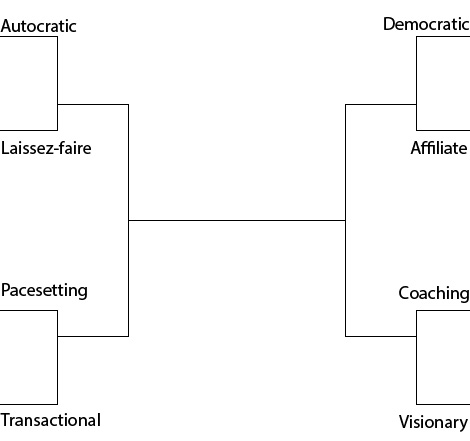 In the college basketball world, everything boils down to one thing – March Madness. And what madness it is! Out of more than 300 schools that play Division 1 basketball, 68 of the best teams are selected to participate in the NCAA tournament to see who will be the one, undisputed college basketball champion. But the fun isn’t just reserved for players and coaches. From casual watchers to sports fanatics, millions of people across the world participate in what has become a spring tradition – competing in March Madness tournament brackets where everyone from friends and family to co-workers compete against each other by predicting the winners of every tournament game. This pastime is taken seriously, too. Organizations, like Berkshire Hathaway and Quicken Loans, entice participants with big paychecks to individuals who fill out the bracket from 68 teams to the Final Four to the champion. Even heads of state like U.S. President Obama participate.
In the college basketball world, everything boils down to one thing – March Madness. And what madness it is! Out of more than 300 schools that play Division 1 basketball, 68 of the best teams are selected to participate in the NCAA tournament to see who will be the one, undisputed college basketball champion. But the fun isn’t just reserved for players and coaches. From casual watchers to sports fanatics, millions of people across the world participate in what has become a spring tradition – competing in March Madness tournament brackets where everyone from friends and family to co-workers compete against each other by predicting the winners of every tournament game. This pastime is taken seriously, too. Organizations, like Berkshire Hathaway and Quicken Loans, entice participants with big paychecks to individuals who fill out the bracket from 68 teams to the Final Four to the champion. Even heads of state like U.S. President Obama participate.
So we at Refresh Leadership wanted to have our own March Madness. And this time, the readers will decide who will advance to the next round. But instead of basketball teams leaving it all on the court, we’re going to take eight different leadership styles to determine the number one, most effective leadership style out there. According to Daniel Goleman’s Leadership That Gets Results, in the Harvard Business Review, the leadership style of businesses’ managers is responsible for 30% of a company’s bottom-line profitability. So this is a major factor that affects everyone’s business. In this tournament, there can only be one true champion. Here is the March Madness Leadership Championship bracket:
The Elite Eight

You’ll be able to vote for the best leadership style in a minute, but first check out the scouting report!
Scouting Report
Autocratic – This type of leadership is best described as an authoritarian leadership style. This leader has ultimate control over all decisions. Almost all vision and direction comes from the top with little or no input from others. This style is good for team members who need close supervision, but squelches productivity from creative people. It’s also great in times of crisis, like a military leader, but over time can be ineffective due to the high criticism/low praise dynamic.
Laissez-faire – This French phrase literally means “let (them) do.” This leave-it-be mentality gives most decision-making power and responsibility to the employees. While this works well with highly experienced and well-trained individuals, it may be detrimental for those needing supervision.
Pacesetting – For the highly motivated and driven leaders, this leadership style is used when management wants to have bigger, better results. The idea is to set the bar high, have grandiose standards, and make lofty goals. Though it has the potential to yield great results, it may set people up for failure.
Transactional – Transactional leadership, or managerial leadership, focuses on a chain of command between management and employees that creates motivation through a system of rewards and punishments. If employees perform well or meet goals, they are rewarded monetarily or through other means. However, if an employee doesn’t perform well, he or she is subject to certain punishments or penalties. It can provide initial motivation, but may keep employees from reaching full potential.
Democratic – Also known as participative or consensus leadership, democratic leadership takes views and ideas from across the board to determine a goal, direction, or plan. This helps to ensure every team member feels part of the process and important; however, it can be ill-equipped when handling an issue or crises that needs immediate action.
Affiliative – This style promotes harmony between team members by using a consensus, like democratic leadership, to solve a conflict. Affiliative leaders build up employees to make the team feel appreciated. Seemingly the opposite of autocratic leadership, this technique is high praise/low criticism, which may leave poor performances unchecked.
Coaching – This is a one-on-one approach that is focused on employee development and growing workers into top talent. Its strength is to help team members meet their goals within the company and personal career, but can be perceived as micromanaging.
Visionary – Highly focused on the future, a visionary leader is great when an organization either needs to adapt, head toward a new direction, or maintain relevancy. This leader has a vision where the organization needs to go, but not necessarily how to get there. This is best when working with highly creative individuals, but can be harmful with inexperienced workers.
Who advances to the next round?
After reading the scouting report, hopefully you have a better idea which leadership style is going to make it to the next round – the Final Four. Vote for one leadership style for each match:
Stay tuned to find out which leadership styles advance to the next round of March Madness: Leadership Championship Tournament. Are there any leadership styles we missed? Let us know in the comments section below!

Interesting concept. This really made me think strategically. Will be interested in learning what leadership styles make the Final 4. Please email me the results of the March Madness – Leadership Bracketology.